Reviews & Articles
art and what is missing in the socially-engaged
Yang YEUNG
at 11:45am on 16th November 2016
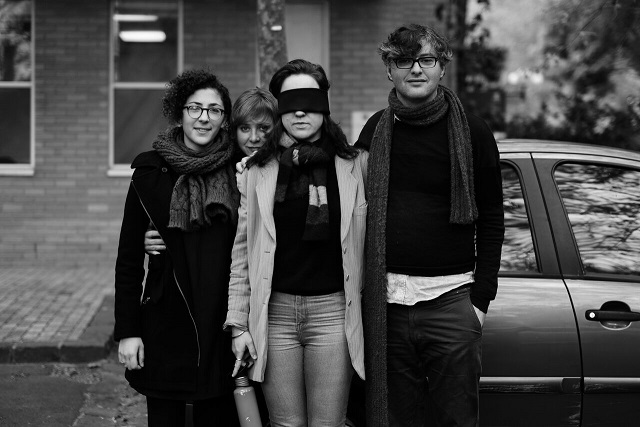
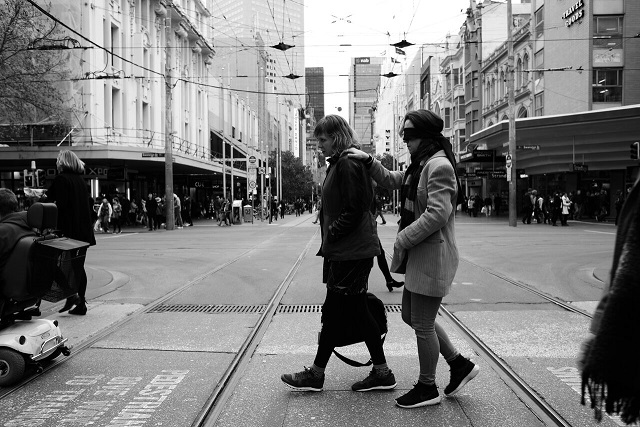
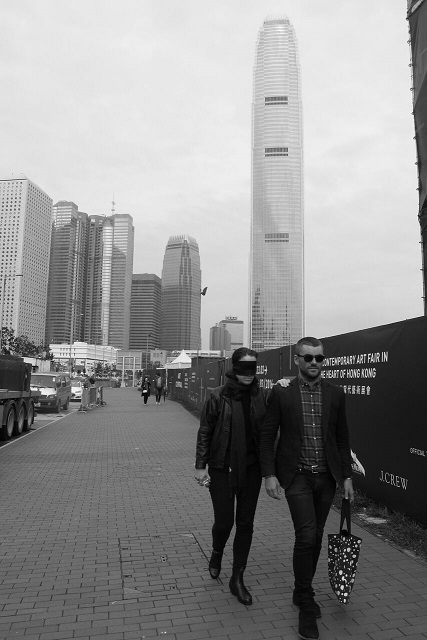
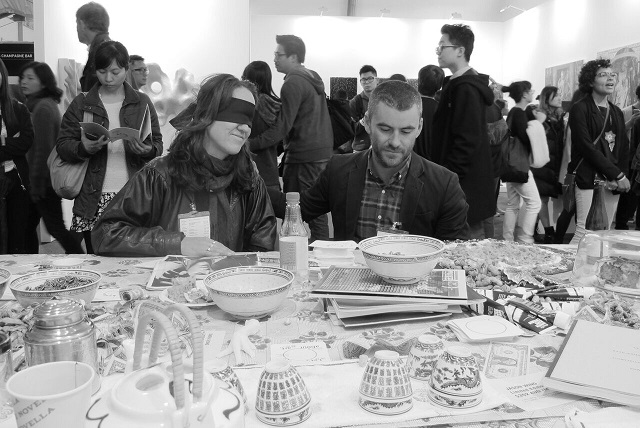
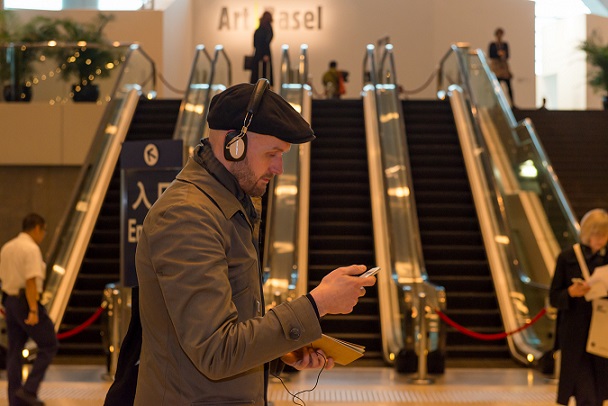
Captions:
1. - 2. Frances Barrett, Curator, 2015, 24-hour live performance with Joel Stern and Danni Zuvela as part of Liquid Architecture's 'FM[X]: What Would a Feminist Methodology Sound Like?', Melbourne. Photo: Keelan O'Hehir. Courtesy of the artist.
3.- 4. Frances Barrett, Curator, 2016 , 36-hour live performance with Mikala Tai and Toby Chapman as part of 4A Centre for Contemporary Asian Art's 'Roundtable x 4A' at Art Central Hong Kong, Photo: 4A Centre for Contemporary Asian Art. Courtesy of the artist.
5. Samson Young, So You Are Old by the Time You Reach the Island, 2016. Photo Courtesy: Dennis Man Wing Leung.
(原文以英文發表,評論「Frances Barrett: 策展人」及「楊嘉輝: 到達那個島嶼的你已經成長」兩個藝術創作項目。)
1
The recent habit in naming one way of practicing art as ‘socially-engaged’ registers both the familiar and obscure: the familiar for its evoking such other names as ‘community art’ and ‘public art’ that emphasize the responsibility of art in citizenship of which the socially-engaged is a part, and yet also obscure for how socially-engaged art may be a continuation or rupture of apparently similar practices.
What does socially-engaged art value? I have made a random online search for grants currently open calling for art projects that are socially-engaged. Some recurring key terms include ‘social inclusion’, suggesting the value of equal citizenship and equal rights to freedom for all; ‘leadership’, suggesting artists’ ability to innovate, bring forward, and convey principles through acting in group relations; and ‘social change‘ suggesting systematic transformation of established structures in society. What might be the reasons for all these to be choice worthy for art? To value freedom and equality is to resist the privileged position of the artist hyped up by the signature and celebrity culture; it is to challenge the halo effect produced by an exaltation of art. It is also to resist the imperative to keep art ‘pure’ for the consumption by a select few. To value collective activities is to resist extreme forms of individualism, sometimes turning into narcissism, [1] and to affirm the responsibility of art towards its encounters with others. To value art and the artists’ capacity to lead is to resist the closing off of institutions that claim the exclusive rights to lead by adjudication, arbitration, and connoisseurship, and to institute other ways of valuing art for social change. To articulate and affirm the value of all of the above has been part of the collective effort in interpreting art as having a broader reach – messier, and more nuanced, than the art object is able to suggest.
Socially-engaged art is an interpretation of specific cases and practices of art, and by being an interpretation, contributes to the understanding of art as all it could be, just as any particularity informs the activity of thinking all that could be. What keeps me wondering, however, is that if all these values registered by ‘socially-engaged art’ are already in our vocabulary of how art flourishes, what it offers to charm and challenge, how far does the designation of socially-engaged art help us understand art as all it could be? I am concerned whether sometimes the designation is too hastily coined (partly for the reason that the promise of the kind of resistance it carries is exaggerated) to be offering too little, too soon. If the socially-engaged directs us towards what is already recognizable, if the socially-engaged directs us towards what more than how it is made or done (for instance, how the internal governance of a project may reproduce existing institutional hierarchies of power, how artists come into a project and leave it, or leave it behind etc.), and if the designation is coined after a synchronic analysis and not a diachronic one taking time and duration into consideration, what may we be missing in art?
Two artistic compositions recently presented in Hong Kong offer help with this question. Samson Young’s multimedia So You Are Old by the Time You Reach the Island and Frances Barrett’s Curator, presented in Art Basel Hong Kong 2016 and Art Central Hong Kong 2016 respectively, are both durational and involve activities of walking the city and elements of performativity (in their liveness). They begin not by social engagement in the sense of involving communities sharing identities, interests, or reasons for solidarity, but by confronting with and revealing estrangement produced by a deficient society. While they begin from detachment, they do not rely on the isolation of a pure, artist self. Young and Barrett both choose to expose the social estrangement first and begin from change on the personal level. Their works open up the passage for them and us to face up to and transform that concrete sentiment into a sensibility that expands and complicates the magnitude, weight, and intensity of social existence. Given the priorities in their artistic concerns, it does not seem right to name these works as socially-engaged art, but it does not seem right either to say they are not socially-engaged for the evocation of such ideas as social inclusion, leadership, and social change. Thinking through them indicates there is no easy or convenient way to apply the designation of socially-engaged art to an artistic activity, and that an interpretation, despite its prevalence, does not necessarily help us understand how artists think about their relation with society and others. Learning through them is also helpful in examining more carefully the value of the socially-engaged in art. For instance, I doubt if contemporary art in Hong Kong has produced the narcissistic artist. Considering the many reflections on the relation between art and society out of recent social movements, [2] the enthusiasm artists express when they reflect on their immersion in social circumstances and their need for personal space to think, artists have been taking up questions of responsibility and citizenship in the changing social, cultural and political circumstances of Hong Kong. These are questions that have been not only prominent, but are becoming enduring. To learn from the two projects is to let art challenge the interpretation of art: the inadequacies and derivative nature of the language for art.
2
Samson Young’s So You Are Old by the Time You Reach the Island is a 40-minute walk that began in Art Basel Hong Kong in the Hong Kong Convention and Exhibition Centre (HKCEC), Wanchai, and ended on the streets of neighbouring district Admiralty. For the HKCEC being also the ceremonial space created by Great Britain and the People’s Republic of China around the year 1997 to display their power and authorize their rule, and for Admiralty being occupied by the people for displaying another kind of power seeking legitimacy of rule in recent years, the setting of the walk compels us (out of our nature and our duty) to reflect on the nations’ apparatuses of self-monumentalization and to ask questions about them as gestures of closure. However, that the walk is an individuated experience does not make it not socially-engaged.
The walk was dependent on our social existence from the start, for as participants, we had to be willing to register as part of a group first, to be starting the walk together before moving onto processes of individuation. It is not trivial that these avowals were asked for, as making the temporary social contract with each other explicit. Compared to the open and free availability as another method of distributing art, which may end up in the reproduction of uneven accessibility, Young’s work sought an undertaking from us to be involved in a set of newly constituted social relations, albeit temporarily. Participants were to carry iPods during the walk, viewing and listening to nine videos telling the story of the protagonist Ah Lok, from the Ministry of Gentlemanly Warfare, with noise, singing voices, music, and language, blended into our footsteps. There were many provocative and evocative juxtapositions of visual and sonic materials throughout, and I cannot consider them all in the brevity of this essay. I would like to think more of how Ah Lok came to be, in the hope of understanding the way the artist appropriated his ‘self’ in the work. Played by Young himself, Ah Lok moved in and out of the video scene. We learnt of his love of the radio, his mother’s experience in making radios, his take on the sovereignty change of Hong Kong as part of its recent history, and more. Tied and timed to specific places participants walked through, we became the “walking, thinking body” (a phrase the narrator opened the journey with) that Ah Lok was. He did think a lot – the absurdity of hoarding in urban spaces and the “sound marks that persevered” [3] despite their being cut up in ‘urban renewal’, a euphemism officially coined masking the damage it also brings, the fantastical world of Homer’s Poseidon and the Cyclops, the past that called to home but bereft of things to please... Young also wished and hoped for “sound to inspire change”, [4] for a future towards which the journey would continue… It was with him and in him that we experienced our social being.
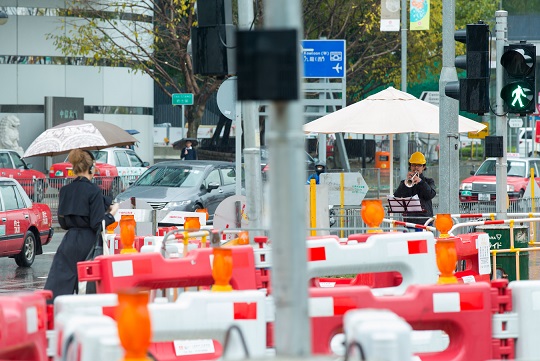
Samson Young, So You Are Old by the Time You Reach the Island, 2016. Photo Courtesy: Dennis Man Wing Leung.
Did Ah Lok know where he was going? It seems to me this was not the point of the walk. Instead, the walk compelled us to confront estrangement constituted by the reality of what the social could make intelligible, showing us the estrangement that precisely comes from the failure of the social to exhaust all that there is to our existence. This incommensurability between the socially established and intelligible and all that which is not shows life as much more blunt and direct: life as given – as a condition and as a gift, with explanations of its origin perpetually unsettled. Our work, as led by the artist, is to activate our imaginative capacity and in an intimate engagement with the yet-to-be.
Lastly, the finishing point of the walk involved an accidental but emotionally charged gesture of an umbrella being put up. It so happened that during one day of the walk, rain fell upon the 20 or so participants scattered at the junction of Connaught Road Central and Tim Mei Avenue, around the entrance of the Central Government Offices. As we were listening to the last instructions, a singer approached each participant and gently sang to each. Ah Lok stood at a distance on a footbridge, watching this temporary aggregate of anonymous bodies as strangers to each other and the artist staged and embodied as stranger to himself. As the singing came to an end, we received a piece of paper with a number to call. The voice of Young picked up and it started singing. [5] The gigantic and the miniature of memory met on equal terms in time and space. [6] The accidental occurrence of rain brought a volunteer over to some of us who didn’t have an umbrella, offering shelter. The moment where strangers met strangers, evoking memories recurring street demonstrations that began in the site (including the larger scale Umbrella Movement in 2014) did not close up the meaning and aesthetics of the work, but rather reveal on the one hand the limit of historicizing the social space where citizenship was negotiated for understanding what happened, while on the other hand, the elasticity of the social space still in the making, directing time into the future. The art had given life to the place by revealing the incommensurability of routine social life and hope for change distributed in the Umbrella Movement; with the gift of shelter, the magnitude of the incommensurability was accentuated between the social and our sense of being, and the general deficiency of social existence laid bare.
There are many reasons to say Young’s work is not socially-engaged art as it is often understood, but there are also many reasons to say it is, by being open and honest with how the social and the desire to engage have constituted the art. At the same time, it holds dear, to borrow John Berger’s gesture, what is still coming about, resisting closure by engaging with the social, and probing into the pre-social and a-social in the sentiment and intellectual curiosity of ambivalence.
The performance Curator by Frances Barrett also directed attention away from the art fair by figuring a walking, thinking, and listening self. Sight, however, was suspended. It was also a walk performed by the artist, not participatory. By passing through the city at an ordinary time and rhythm of day, the walk gave shape to the artist’s alternative vision of what it means to live by traversing such apparatuses as the art fair and what conditions them. Barrett’s ‘intimate contract’ with her curators [7] began as she landed at the Hong Kong airport on outlying Lantau Island by invitation of 4A Centre for Contemporary Asian Art in Art Central, located at the Central District harbor front of Hong Kong Island. She blindfolded herself and began her 24-hour journey of being cared for by curator Toby Chapman and director of the Centre Mikala Tai. Curator was first commissioned by Liquid Architecture in Australia, which asked that Barrett respond to the question “What does a feminist methodology sound like?” In the Hong Kong iteration, Barrett continued with her inquiry into the artist-curator relationship by thinking through how “careful listening” played out in the dynamic. [8]
Society may see the blindfold as signaling a lack and a deprivation (of sight, and of a capacity in general), even a source of weakness. Barrett’s performance challenges and re-negotiates such a rigid mode of meaning-making by configuring the blind as a source of power. Barrett’s blindfold sets up a physical barrier between us and the artist to suggest that her world is composed and intact but not available to us. Her senses and sensibilities as a result are unlearnt, re-distributed, augmented, and re-connected, but again, not available to our knowing. Like us, the artist has also thrown herself into the unknown and indeterminate, for the blindfold crafted out a newly embodied space that enabled relationships to be forged between herself and her outside, her other. She has made herself a stranger to herself, like Young has, in order for the self and the way it connects socially to be unlearnt and remade. The suspended autonomy leaves room for a different kind of agency that shows the continuum between the market of art and the social life of art, despite the former’s effort to separate them. “I removed myself from the hierarchies,” Barrett has said. To blindfold oneself is also an explicit gesture of refusal – not refusal by antagonism, but refusal by temporary withdrawal, so that one’s sensibilities can be cared for and re-constituted. What the artist needs is the curator’s care, not for the sake of the trading of her work, but for her being a full human being, with physical and emotional needs in addition to professional and intellectual ones.
While tapping the idea of curating as caring for, foregrounding the intimate, bodily relationship between the curator and artist, one can also interpret the role of Barrett as reversed, as her performing the blindfolded curator. It can work both ways because it shows the dead-end of sometimes non-stop giving expected on either end of the curator or artist. Barrett’s performance registers the amount of commitment and constant negotiation required between curator and artist, the dynamic between them, and, according to Barrett, “how far they would go to realize a work”. The sociality between the artist and curator, and its situated-ness in the larger society, shows how the art fair, as if apathetic to what is happening outside, is in fact fully dependent on what life offers.
3
I have not done justice to the richness of both works by focusing on only particular aspects for the purpose of discussing the social and the engaged. What interests me here is that both Young and Barrett begin by detaching and disengaging from society, so that its established rationalities are in suspension. Reflective judgment is made possible when the artists are sensitive and alert to the social, so that the grammar of society that has made them could be shaken up. For artists, the social remains constantly open and not-yet-resolved and is up for challenge as the unfamiliar other. [9] On the reception side, we experience concrete shapes of fear, anger, frustration, joy, pride, vulnerability, among many others, not all of which are socially intelligible and presentable. If we who interpret and write demand that the socially-engaged be a solution to this strangeness, we may leave much of art’s intricacy and the ardor that comes with it untouched and untapped.
Art is not accountable only to us and each other in our sociality. I am not trying to be cryptic or abstract, but to point to the difficulties and challenges that art continues to present to us, and what needs to be upheld for art to breathe fully and freely. To be overly attached to the social – however sound the reasons may be – risks missing the non-human that also comes into life. It also misses the way artists are acutely aware of being strangers to themselves, and of having to keep this strangeness alive for their art to go on. The social can humanize art too much and too soon, to miss the magical, the spiritual, and the poetic– all that which art gives unto life.
I see that with more thinking of the social and its manifestations and alternatives, the more likely we are in a better position to cope with the fear of change. I feel unsettled by the gap between interpretation (with language, always already ‘socially constituted’ but also in the making) and art, and I want to make a small dialectical space for art to challenge the interpretation. I seek a more reflective interpretation of the socially-engaged. I seek to ensure its source is not misplaced insecurity, or an exaggerated claim for the promise of art to make social change in its fight against empty if not utopian ideals for the future, or any guarantee that hope could be distributed by making the socially-engaged an exclusive and unquestionable good – for all these could fail, just as all kinds of disparate things may arise out of the same conditions. I care more for a language for art that is open for more uncertainties and complexities, and for less righteousness and didacticism, while remaining as responsible as it can be for all that is to come of art.
*I would like to express my heartfelt gratitude to Madeleine M. Slavick for her comments on the English copy of this essay, and for Joanna Lee Hoi-yin’s sensible and sensitive translation of this essay into Chinese.
Notes:
[1] For instance, Gablik’s critiques the model of ‘insular individuality’ in the understanding of the modern artist’s identity and her argument for the ‘connective self’, 61-75. The idea of ‘collective activity’ is taken up by Becker, especially chapters 1 and 2.
[2] See for instance, Cheung’s analysis of exemplary art works in Hong Kong in 2000 to 2010 with a component of social engagement. See also the twin volume edited by Lee, published by Wooferten, that reviews the Wooferten’s Art/ Activist in Residence from 2011 to 2015.
[3] From audio narration of Young’s walk.
[4] From audio narration of Young’s walk.
[5] Ah Lok (Young) sang the theme song of a popular television soap opera series Kwong Chiu 狂潮 (Cantonese: kwong4 ciu4) from the 1970s. An important benchmark in the history of television in Hong Kong, it is regarded as the first long-running series, with over 100 episodes. The song was originally sung by Kwan Kuk-ying關菊英. In this last stop of the walk, Ah Lok began singing, “It’s him, it’s also you and me. We are close to each other, love each other, and also fight with each other.” (my translation, “是他也是你和我,同相親相愛也相爭”) See http://www.feitsui.com/lyrics_t/%E7%8B%82%E6%BD%AE-1361.html for the Cantonese pronunciation of the lyrics. See also http://www.ln.edu.hk/mcsln/20th_issue/feature_02.shtml for an analysis by Hong Lai-ching (my translation, 洪麗晶), Lingnan University Department of Cultural Studies Master of Cultural Studies online publication; in Chinese only.
[6] See Stewart, especially chapter 3, and Chow, especially chapters 4, 7 and 8.
[7] See the artist’s web page on Curator. Web. http://francesbarrett.com/projects/curator. 30 July, 2016.
[8] Interview with artist. 2 April, 2016. Hong Kong, and emails between me and the artist. 1-2 August, 2016.
[9] See Steiner, 139.
Works Cited:
Becker, Howard S. Art Worlds. Berkeley: University of California Press, 2008. Print.
Cheung, Stephanie. “Taking part: participatory art and the emerging civil society in Hong Kong.” World Art, 5.1 (2015): 1-24. Print.
Chow, Rey. Writing Diaspora. Tactics of Intervention in Contemporary Cultural Studies. Bloomington and Indianapolis: Indiana University Press, 1993. Print.
Gablik, Suzi. The Reenchantment of Art. London: Thames and Hudson, 1992. Print.
Lee, Chun Fung, ed. AAiR 2011-12. Hong Kong: Wooferten, 2016. Print.
---. AAiRII, Art, Community, Activism. Hong Kong: Wooferten, 2016. Print.
Steiner, George. Real Presences. Chicago: University of Chicago Press, 1989. Print.
Stewart, Susan. On Longing. Narratives of the Miniature, the Gigantic, the Souvenir, and Collection.
Durham and London: Duke University Press, 1993. Print.
Wu, Hung. Remaking Beijing. Tiananmen Square and the Creation of the Political Space. Chicago:
University of Chicago Press, 2005. Print.
First published in Art Review Hong Kong, issue 1, 2016, Art Appraisal Club: Hong Kong.
